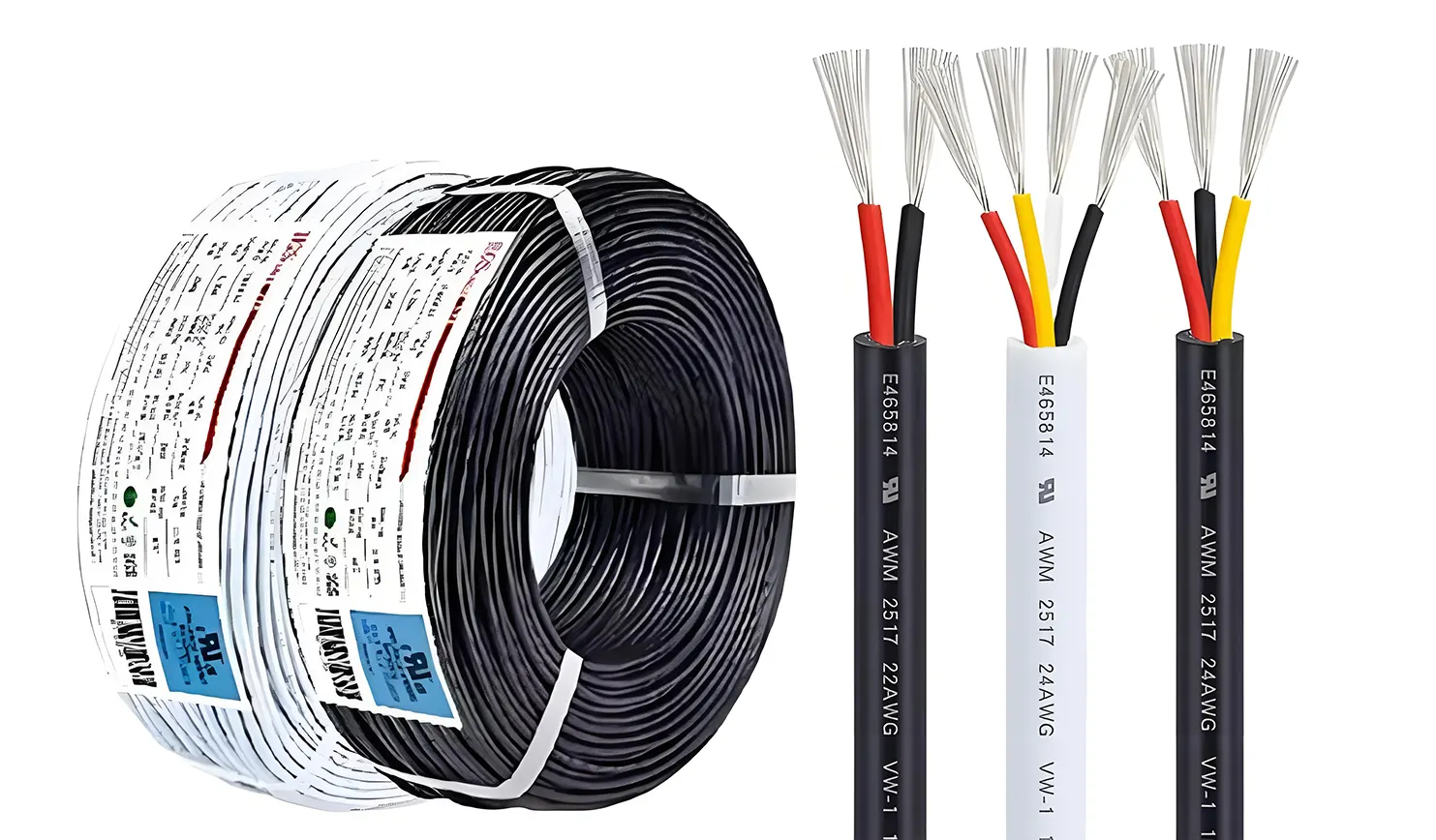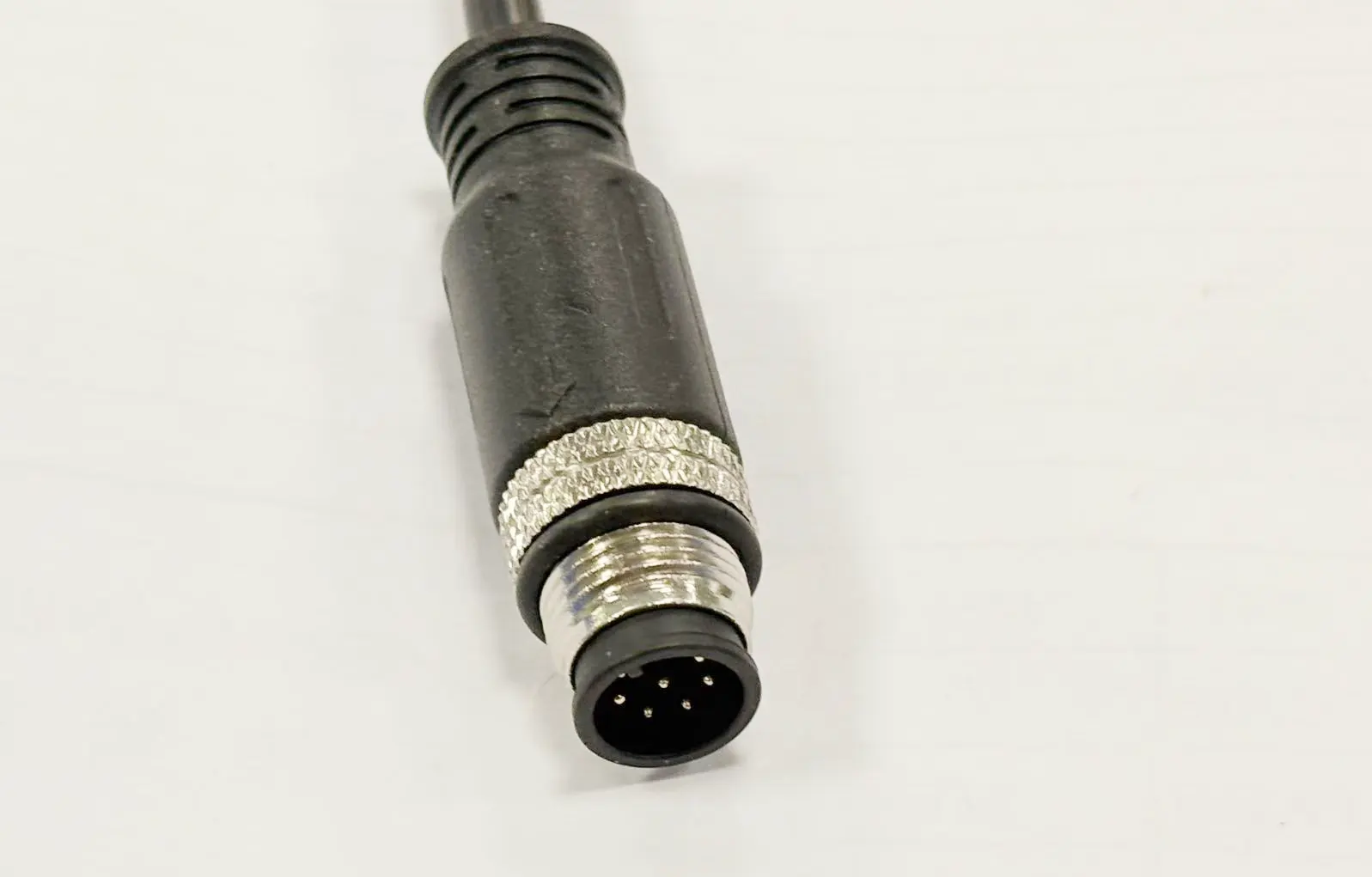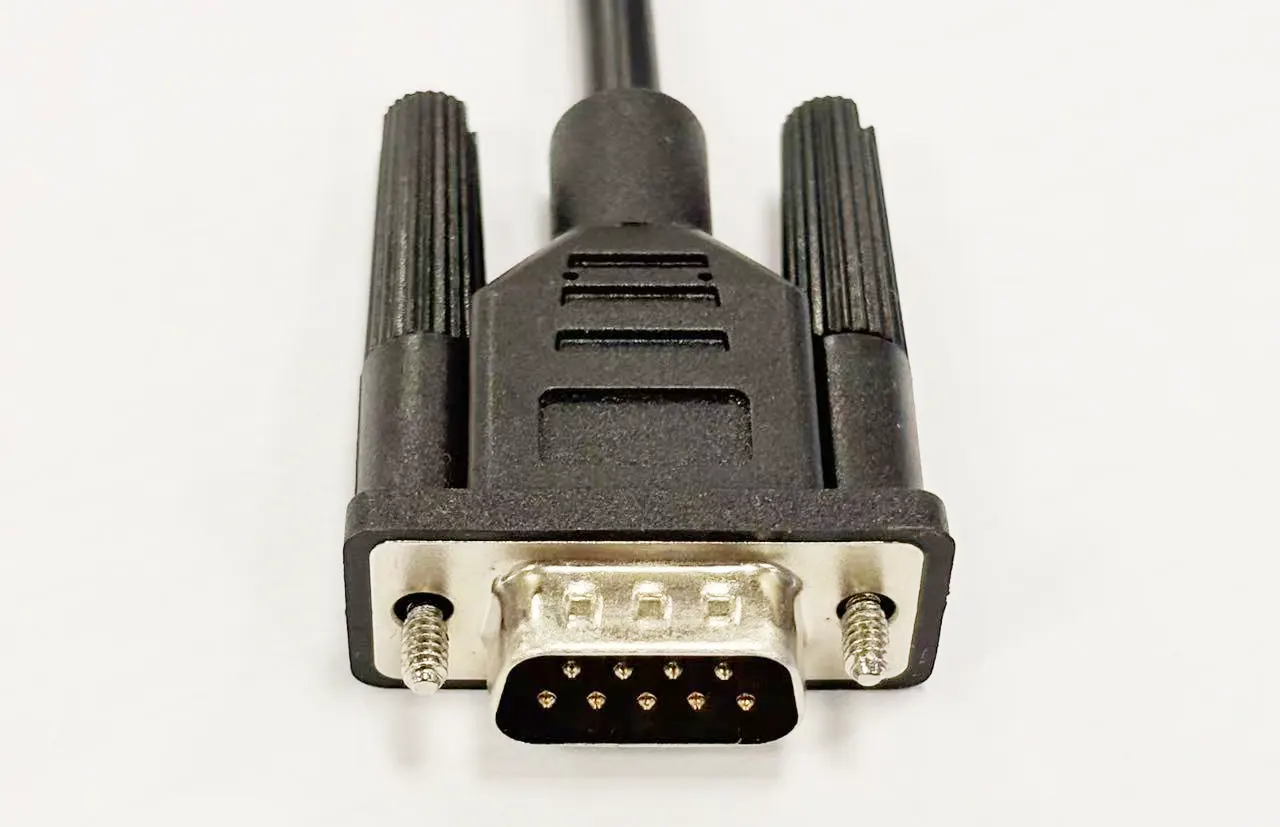
By Admin
2025-07-23 08:44:51
D-SUB 9P to M12 Waterproof Cable Harness
D-SUB 9P to M12 waterproof cable harness, one end is a 9-pin D-SUB interface, commonly used for serial communication (such as RS-232 port) and low-current signal transmission, suitable for space-constrained equipment such as industrial control panels and embedded systems; the other end is an M12 interface, with good waterproof, dustproof and oil-proof performance, commonly used in the industrial field.
1. Core materials
Wire: UL2517 24AWG*7C PVC Black OD:5.1mm
This wire harness is the core carrier. The wire meets the UL2517 standard, with a rated voltage of 300V and a temperature of 105℃ (the insulation resistance is still ≥100MΩ under continuous working at this temperature). The wire gauge is 24AWG, and the conductor resistance per kilometer at 25℃ does not exceed 8.21Ω. It can efficiently and stably transmit current and signals to meet the power supply and data transmission requirements of medium and low power equipment; its outer layer is a black PVC sheath with an outer diameter of 5.1mm and a uniform sheath thickness of 0.8-1.0mm. After being placed in a 105℃ high temperature box for 1000 hours, the sheath has no hardening or cracking, and the insulation resistance retention rate is ≥80%, which is durable and heat-resistant.

Left-end connector: 8PIN M12 waterproof male connector
This connector is highly resistant to aging. In humidity cycles such as ultraviolet rays, -40℃ freezing and +85℃ high temperature, the shell and sealing ring are not easy to crack or harden, ensuring that the performance is maintained after long-term (usually ≥5 years) use; its terminal is designed as 8PIN, and the surface is treated with a 10u'' gold-plated layer. Through the advanced X-ray fluorescence thickness gauge, the thickness error of the gold-plated layer is controlled within ±0.5u'', and the contact resistance is not higher than 10mΩ at 25℃; waterproof performance is the core advantage. It has passed the IP67 waterproof test and can be completely dustproof. It can be immersed in 1 meter deep water for 30 minutes without water ingress, which can meet the daily humidity, short-term immersion in water (such as equipment cleaning, rain immersion) and other scenes.

Right-side connector: D-SUB 9P MALE PBT (black rubber core + solder wire type)
The rubber core of this connector is made of black high-temperature resistant PBT material, with a melting temperature of more than 220℃. During welding, even if the soldering iron is in contact with 260℃ for 5 seconds, it will not deform, which can ensure the welding quality; the front contact area of the terminal is 3u'' gold-plated, and the rear welding area is tin-plated. The gold-plated layer has no corrosion after a 48-hour salt spray test. The welding wetting time of the tin-plated layer is ≤2 seconds and the solder joint pull-off force is ≥30N; the shell surface is treated with "nickel in front and tin in back", the nickel layer thickness in the wear-resistant area is 5-8u'', the tin layer thickness in the welding area is 8-10u'', and the shell and rubber core bonding force is ≥40N.

2. Production process
Wire cutting and stripping: This process first uses an advanced fully automatic wire cutting machine for wire cutting with an accuracy of ±0.1mm. The wire is accurately cut into 370mm length according to the design requirements, and the wire cutting incision is flat and smooth. After inspection with a 40x magnifying glass, there is no burr, which lays a good foundation for subsequent processes; then the wire is stripped, and the outer sheath is accurately removed by 13mm on the left and right ends respectively. The stripping depth is strictly controlled at about 2/3 of the sheath thickness (0.5-0.7mm), which can completely expose the internal conductor without damaging the conductor.
Connection process: After the conductor is stripped, it is lead-free tinned (Sn99.3%+Cu0.7%), the tin furnace temperature is 260±5℃, the tinning time is 3±0.5 seconds, the tin layer coverage length is 11±0.5mm, the thickness is 0.2-0.3mm, and there is no falling off after 10N axial tensile test; use a constant temperature soldering iron (temperature 320±10℃) for welding, the solder joint coverage rate is ≥95% and there is no bridging or cold soldering. After welding, it passes the AOI optical inspection with a resolution of 0.02mm and undergoes a 100% tensile test (single solder joint pull-off force ≥25N).
Injection molding of the left end connector: the inner layer is made of PA646 black material, the injection pressure is 8-15bar, the mold temperature is 50-70℃, the molding time is 15 seconds, the thickness is 2.2±0.2mm, and the bonding force with the wire is ≥45N; the outer layer is PVC black material, the injection pressure is 6-12bar, the mold temperature is 40-60℃, the molding time is 20 seconds, and the total thickness is 1.8±0.2mm.
Injection molding of the right end connector: the inner layer is translucent low-density polyethylene, the injection pressure is 4-10bar, the mold temperature is 30-50℃, the molding time is 12 seconds, the thickness is 2.0±0.2mm, which is convenient for visual inspection of the internal welding status; the outer layer is PVC black material, the injection pressure is 6-12bar, the total length after molding is 28±0.3mm, and the clearance with the rubber core is ≤0.1mm.
3. Testing process:
Waterproof test: According to IP67 standard (immersion in 1 meter water for 30 minutes), there must be no water ingress inside, and the insulation resistance must be ≥100MΩ;
Conduction test: Under 5V DC, 100mA conditions, the conduction resistance is ≤50mΩ, and there is no short circuit or open circuit;
Insulation test: Apply 500V DC voltage for 1 minute, and the insulation resistance is ≥100MΩ;
Tensile test: Apply 50N axial tension for 30 seconds, the connector does not fall off and the wire does not break;
Salt spray test: After being placed in a neutral salt spray (5% NaCl) environment for 48 hours, the coating is not corroded, and the contact resistance change is ≤20%;
Environmental test: Comply with RoHS 2.0 standards, the content of harmful substances such as lead and cadmium is ≤0.1%.
4. Quality Control System:
Suppliers are required to provide material certificates for raw materials entering the factory. We will test the key indicators of wires, connectors, and injection molding materials, and only those that meet the standards can be put into production. During production, key equipment is calibrated monthly, and the error is controlled within ±1%. Records are kept for more than 3 years, and quality problems are avoided through error-proofing designs. Finished products must be 100% tested for conductivity, appearance, and size (total length 370±1mm), and 20 wires from each batch are sampled for waterproof testing to ensure quality.



